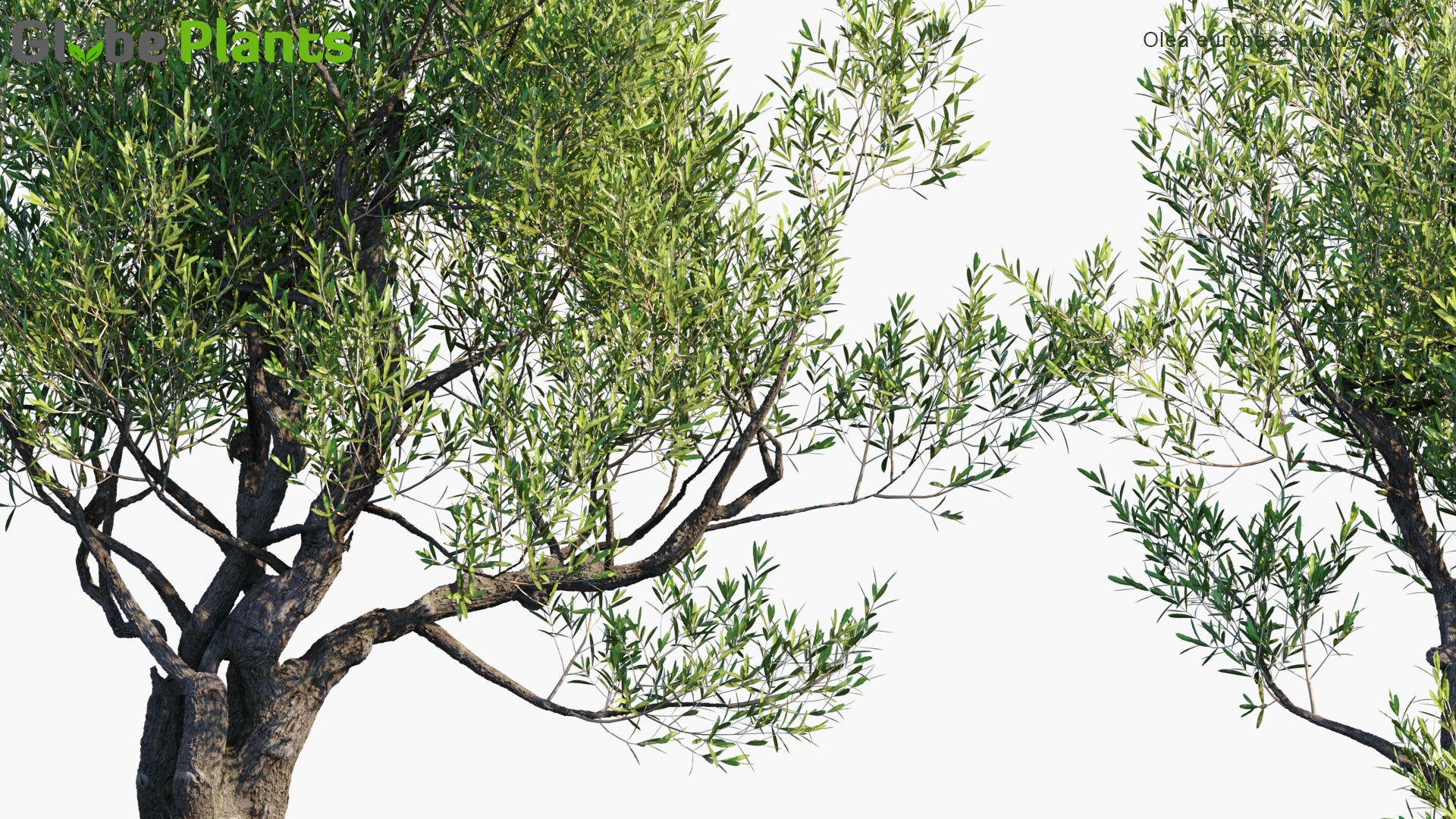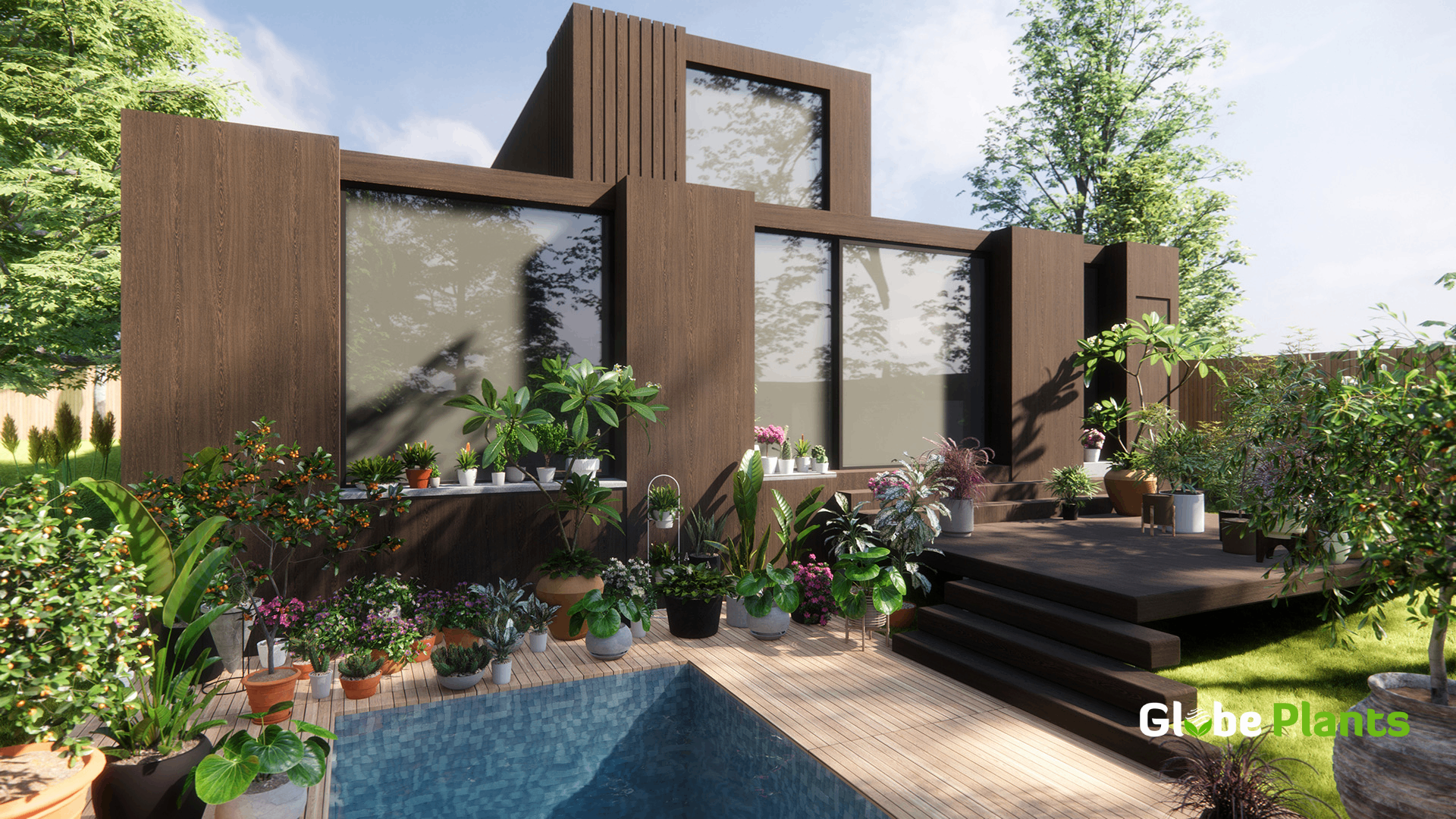This month, our 3D landscaping spotlight focuses on the Washingtonia robusta, commonly known as the Mexican Fan Palm. We provide tips and guides to utilize its unique features in your 3D designs.
Featured Plant Model: Washingtonia Robusta
Characteristics
The Washingtonia Robusta, commonly known as the Mexican Fan Palm, stands out with its tall, slender stature, reaching impressive heights between 60 to 100 feet. Its distinctive, fan-shaped leaves, which form a canopy of 10 to 12 feet in diameter, and its tapering trunk that flares at the base.
The palm's ability to thrive in various conditions, coupled with its aesthetic appeal – whether standing alone or in rows along streets and sidewalks – has bolstered its popularity in landscape design globally.
In addition, Its minimal maintenance, resilience to various climates, and the elegant silhouette it casts against both urban and natural backdrops make it a preferred choice for many.

Geographic Regions
Originally native to the deserts of Mexico, such as Sonora and Baja California, the Mexican Fan Palm has found its way into landscapes worldwide, particularly in the southern and southwestern United States.
Its adaptability to various climates, especially arid zones, and its hardiness in zones nine through 11, make it a versatile choice for designers.
The palm's ability to withstand temperatures as low as 20°F and its preference for full sun exposure and well-drained soils allow it to flourish in a range of geographic regions, from its native desert climates to coastal areas, and urban settings on a global scale.
Usage in Landscaping
Washingtonia robusta is favored for urban and coastal designs, offering adaptable, tall elegance and a tropical feel, especially in sunny, arid regions.
Versatility
The versatility of Washingtonia robusta, or the Mexican Fan Palm, lies in its adaptability to various environments and its ability to enhance different landscape styles in 3D designs.
It thrives in diverse conditions, from coastal areas to inland locales, making it a fitting choice for a range of settings, from serene beaches to bustling cities.
Its tall, elegant form makes it a standout feature in various landscape styles, including tropical, Mediterranean, and modern architectural designs. Whether adorning lawns near towering buildings, adding elegance to parking lots, or serving as a notable street tree, it proves its adaptability across numerous landscape concepts and designs.
Design Applications
Washingtonia robusta is a versatile choice in various design contexts:
- Residential Gardens: These palms add a tropical feel to 3D residential landscapes, offering shade and privacy while enhancing aesthetic appeal in both back and front yards.
- Public Parks: In parks and recreational spaces, Mexican Fan Palms provide shade and visual appeal, transforming ordinary spaces into welcoming oases.
- Architectural Visualization: Architects and designers often use Washingtonia robusta to add a touch of elegance and realism to 3D renderings of residential and commercial exteriors, signaling luxury and sophistication.
Aesthetic Impact
The Washingtonia robusta effortlessly introduces a sculptural aesthetic to landscapes, standing tall and elegant, and anchoring spaces with its dramatic form. It infuses environments with a distinct tropical vacation vibe, serving as a lush, eye-catching focal point in various settings.
Whether positioned as a standalone statement or grouped for a layered, dimensional look, it enhances both compact and expansive landscapes with ease.
Furthermore, the palm captivates with its ability to cast sculptural shadows and dappled light, enriching outdoor ambiances and bringing gardens vibrantly to life.
Best Placement for Your 3D Scene
Strategic Placement
For maximum impact, consider the following recommendations when placing Washingtonia robusta in your 3D landscape:
- Focal Point: Position the Mexican Fan Palm as a focal point within your scene. Placing it near the center or at key intersections of paths or structures will draw the viewer's eye and create a visually engaging composition.
- Scale and Proportion: Pay attention to the scale and proportion of the palm in relation to the rest of the elements in your scene. Ensure it is appropriately sized to fit the context while still maintaining its commanding presence.
- Group Planting: Create groupings of Washingtonia robusta to mimic natural settings. Clusters of these palms can form visually striking groves or alleys, adding depth and interest to your landscape.
- Frond Orientation: Consider the direction of the palm's fronds. Adjust their orientation to create dynamic visual lines that guide the viewer's gaze and add movement to the scene.
Complementary Elements
Enhance the beauty of Washingtonia robusta by pairing it with complementary elements in your 3D landscape:
- Understory Plants: Plant low-growing shrubs, flowers, or ground cover plants around the base of the palm. This contrast between the towering palm and smaller plants creates a sense of scale and adds visual interest.
- Hardscape Features: Incorporate architectural or hardscape elements like pergolas, seating areas, or water features near the Mexican Fan Palm. These elements can create a harmonious blend of nature and design, making your scene more inviting.
- Textures and Colors: Select textures and colors that harmonize with the palm's foliage and trunk. Earthy tones, warm neutrals, and natural materials can complement the palm's elegance.
Lighting and Shadows
To accentuate the features of Washingtonia robusta and create realistic shadows in your 3D scene:
- Directional Lighting: Use directional lighting in your 3D software to simulate the angle and intensity of sunlight. Experiment with different lighting angles to highlight the palm's form and texture.
- Shadows: Pay attention to the casting of shadows. The long, graceful fronds of the palm can cast intricate and captivating shadows. Adjust the shadow settings to achieve the desired level of detail.

Software Compatibility
Globe Plants' 3D tree models are designed to seamlessly integrate with a wide range of 3D software platforms and programs. These include, but are not limited: Autodesk 3ds Max, Blender, Cinema 4D, SketchUp, Rhinoceros 3D, Twinmotion, etc...
Sample Images
To give you a visual taste of what Globe Plants' 3D tree models, such as the Washingtonia robusta, can bring to your 3D software environments, here are some sample images:
Autodesk 3Ds Max:

Enscape:

SketchUp: Rendered with V-Ray

Rhinoceros 3D: Rendered with V-Ray

Twinmotion:

Special Offer!
As part of Globe Plants's 3D Plant of The Month for October 2023, grab yourself a 3D Washingtonia Robusta on our store for ONLY $8.99 USD. Applicable to both High Poly and Low Poly models. Offer ends on 10th November.



